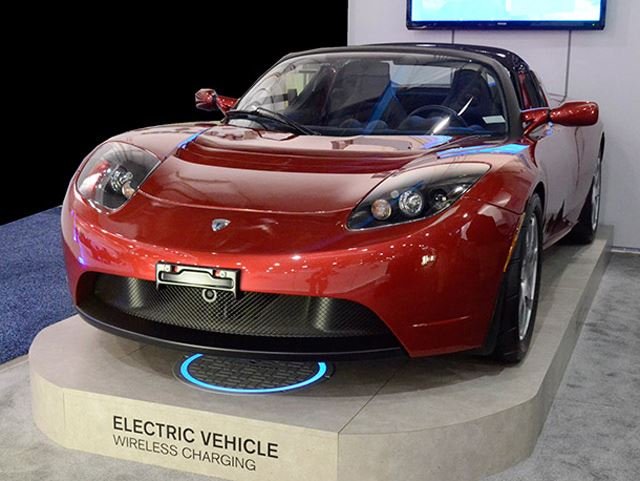However, the fact that a mileage limitation even exists hampers a driver’s freedom to go on road trips (even with Tesla's improvements) and is harsh on negligent owners who forget to plug the car in at night. Fortunately, this may all change thanks to Tesla’s ideas (the inventor, not the electric car brand). In the 1890s, Nikola Tesla experimented with the wireless transfer of power.
Now, more than a century later, the International Society of Automotive Engineers (SAE) is trying to standardize wireless EV charging for future cars. SAE chair of international wireless power group, Jesse Schneider, said in a statement, "Wireless power transfer, using SAE TIR J2954 is a game changer for PH/EVs." The technology has huge advantages over conventional plug-based chargers. It means that an EV or plug-in hybrid owner could simply park on top of a TIR J2954 enabled parking spot and leave their car while it charges wirelessly. By standardizing the frequency band for the technology, it means that manufacturers couldn’t pull an Audi and start a format war by making cars that utilize different charging technologies.
SAE is pushing for a common frequency band of 85 kHz and four separate classes of wireless transfer levels. Cars could be charged at 3.7 kW, 7.7 kW, 11.0 kW, and 22.0 kW, resulting in faster or slower charge times. SAE said that higher power transfer levels could be added to make charge times quicker if future technology allows for it. Time saving innovations such as this will help to accelerate the adoption of EV technology and put mechanics out of business. To really put the nail in the coffin of the internal combustion engine, SAE also mentioned within the document that it is willing to create similar standards for wireless charging technology that replenishes a battery when a car is in motion. What a time to be alive.
Wireless charger images found at SAE.
Related News

